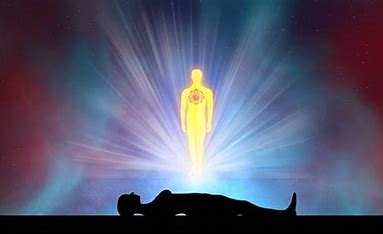
After centuries questioning the religious mantra that every human body has a soul, scientists are gradually acquiescing to the mystery of metaphysics that supports religious belief that there is something in the human that departs the body moments after death.
The phenomenon is known as “The 21 Grams of Life” theory was first advanced by an American physician, Prof Dancun MacDowell, in 1907.
The 21 Grams of Life Theory” is the results of inability of science to explain why a human body loses 21 grams of weight shortly after the pulse stops. However, the determination of when a person dies remains ambiguous with regard to: when does the brain stops functioning, the body cells or the pulse ceases.
MacDowell concedes that the body parts stop functioning at different times at the end of life. However, the loss of 21 grams is almost a constant, he says, and argues that the loss is consistent with religious beliefs that the soul departs the body moments after death.
The shift in belief that human beings have “souls” began at the turn of the 20th century when MacDowell concurred with religious stand on the existence of a ‘soul’ as true and verifiable scientifically.
MacDowell’s verdict is contained in research findings in what is dubbed “The 21 Grams of Life” theory. The physician opined in 1907 that the drop in body weight by 21 grams shortly after human beings die is a credible testimony of the “departure” of the soul. The loss of 21 grams moments after the heartbeat stops is a constant in all deaths irrespective of age, gender and body mass, the physician explained.
According to MacDowell, the statement that “we all lose 21 grams the moment we die” is both authoritative and inaccurate. It’s a short and sweet look, he avers, but the science behind the phrase adds up to zero. The apparanet contradiction in the statment has been percived as a partial admission by the professor that there were a few cases that defied the theory.
In an article published in 1907 by MacDowell in the American Journal of Medicine, for hundreds, possibly thousands of years, humans have believed in a “soul” that has a distinct physical existence. The report says it wasn’t until 1907 that MacDougall of Haverhill, Massachussettes University, actually “weighed that soul”.
In his office, the journal reports, the physician had a special bed “arranged on a light frame built on very finely balanced platform beam scales,” which he claimed were accurate up to two-tenths of an ounce. Knowing that a dying person could shake and disturb such delicate scales, he decided to “choose a patient who died of a disease that would produce extreme fatigue, with little or no muscle movement, because in this case the beam could record any losses that occur in a more perfect balance will be noticed immediately”.
He recruited six terminally ill patients, according to his story published in the April 1907 in the American Journal of Medicine. When he measured weight loss after death, he found that they had all lost 21 grams, which he claimed was ocassioned by the soul deparrting the body.
In this paper, he wrote, the special bedside of one of his patients, “Three hours and 40 minutes after his death, suddenly and simultaneously with the death, the end of the beam fell with a sound of striking the lower beam. Sound, stays there no bounce. Loss is three quarters of an ounce.”
“He was even more encouraged when he repeated the experiment with 15 dogs that had no change in body weight at the time of death. This fits perfectly with the popular belief that dogs don’t have souls and therefore don’t lose weight at the moment of death,” said the story in the journal.
However, before his article was publsihed in the American Journal of Medicine, the New York Times had already ran a story about him on March 11, 1907 that was headlined: The soul has weight, doctor thinks.
Both the medical journal and The New York Times observed that as a result of MacDowell’s experiments, the “fact” that the soul weighs three-quarters of an ounce (approximately 21 grams) became a mantra in medical science that persists to this day.
But as sceintific research advances, the thoery has met with some resistance, which MacDowell himself acknowledged. His critics argue that six (like six dying patients) is not a large enough sample size to make conclusions as the physician did.
He responded with with the anecdote, “When I was studying statistics, my professor convinced me that for people who prefer one type of cola over another, ‘8 out of 10 are not statistically significant, but 16 out of 20’”.
Second, he had a “good” outcome (ie the patient lost weight irreversibly at the time of death) in only one of the six patients, not all six! Two of the results had to be ruled out due to “technical difficulties”.
He explained the technical difficulties thus: One patient’s death indicated a weight loss of about three-eighths of an ounce – but then the situation was reversed! The other two patients lost weight immediately when they died, but lost it again minutes later.
Then he raised the question: “Does that mean they died twice? Only one of the six patients showed a sudden and irreversible weight loss of 21 grams.”
The third problem is a bit more subtle to this today, with all the advanced technology. It is sometimes difficult to determine the exact time of death. What death was he referring to – cell death, brain death, physical death, cardiac death, legal death, etc? MacDowell was cognisant of these different definetions of death.
How could MacDougall be so accurate in 1907? How accurate and precise was his balance in 1907? These are questions some researchers have raised to dispute MacDowell’s ‘21 Grams of Life” theory.
“Enduring myths are born from such small beginnings as a single, unrepeatable result. There might be light after death, but this experiment doesn’t prove it. There is something left behind when we die – our lasting impact on others. We may measure this impression of psychological influence as successfully as we measure soul weight,” wrote MacDowell.
- A Tell report / By Martin Juma











